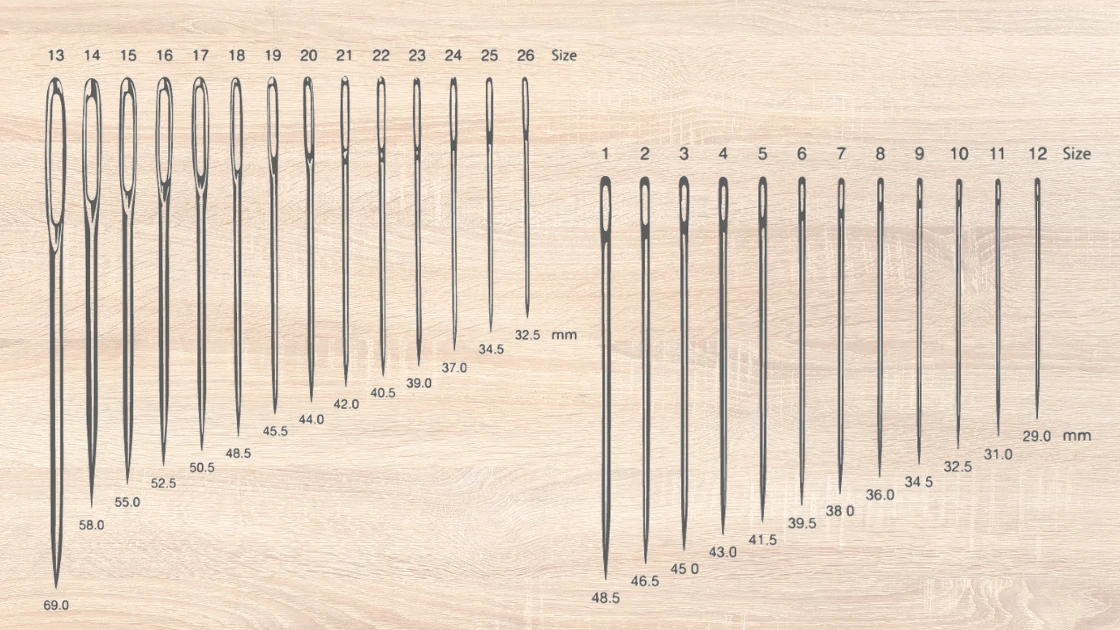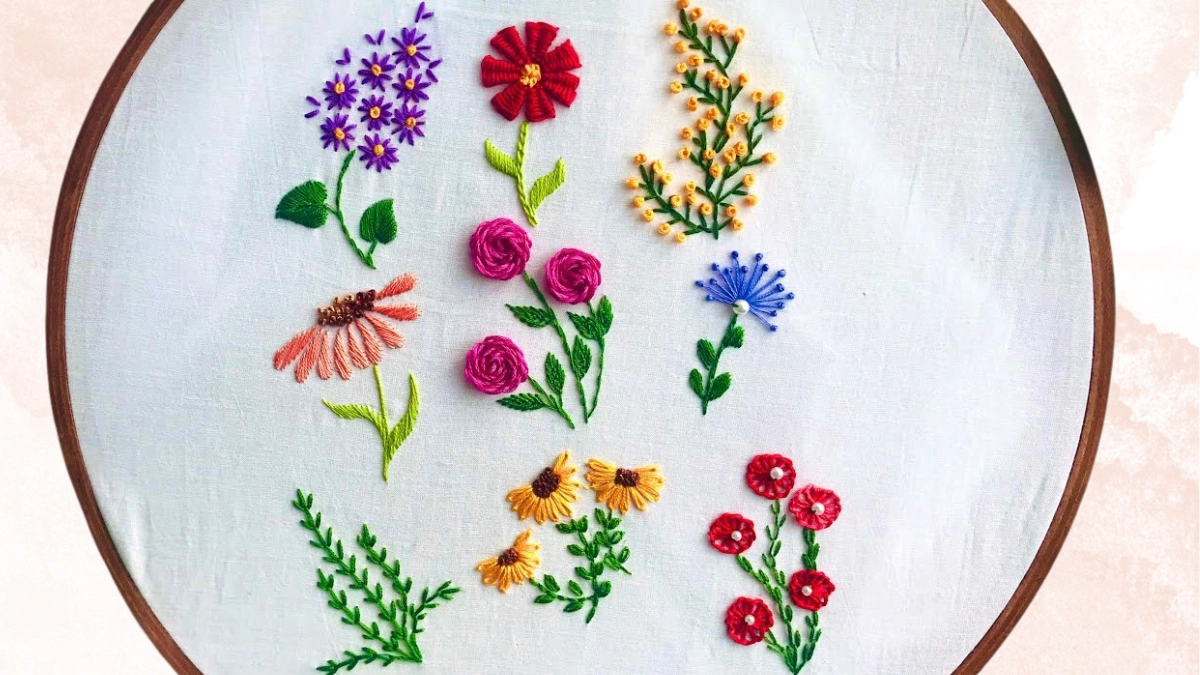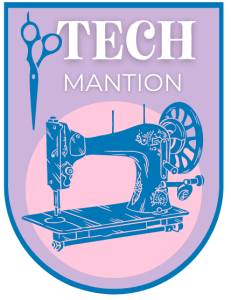Embroidery is a popular craft that involves decorating fabric with intricate designs using various stitching techniques. One of the essential tools in embroidery is the needle, and the size of the needle can significantly impact the final look of the embroidery.
we know, Embroidery needle sizes refer to the diameter and length of the needle. The diameter of the needle is measured in millimetres or fractions of an inch, and the length of the needle is measured in inches. Different embroidery needle sizes are used for other embroidery projects and fabrics.
The size of the needle you use will affect the appearance of your stitching. A smaller needle will create fine, delicate stitches, while a larger one will produce bolder, more visible ones. Choosing the correct needle size for your project is essential to ensure the best results.
Standard embroidery needle sizes range from 1 to 12, with one being the smallest and 12 being the largest. The needle size you choose will depend on several factors, including the type of fabric you are working with, the thickness of the thread you are using, and the desired final look of your embroidery.
A size 7 or 8 needle is a good choice for most embroidery projects, but it’s essential to experiment with different needle sizes to find the one that works best for your specific project. You can create beautiful, high-quality embroidery that will last for years by choosing the correct needle size.
There are several factors to consider when choosing a hand embroidery needle size:
- The type of thread you’re using.
- The weight of the fabric.
- The type of stitch you plan to do.
Heavier fabrics require heavier needles, while delicate fabrics need fine needles.
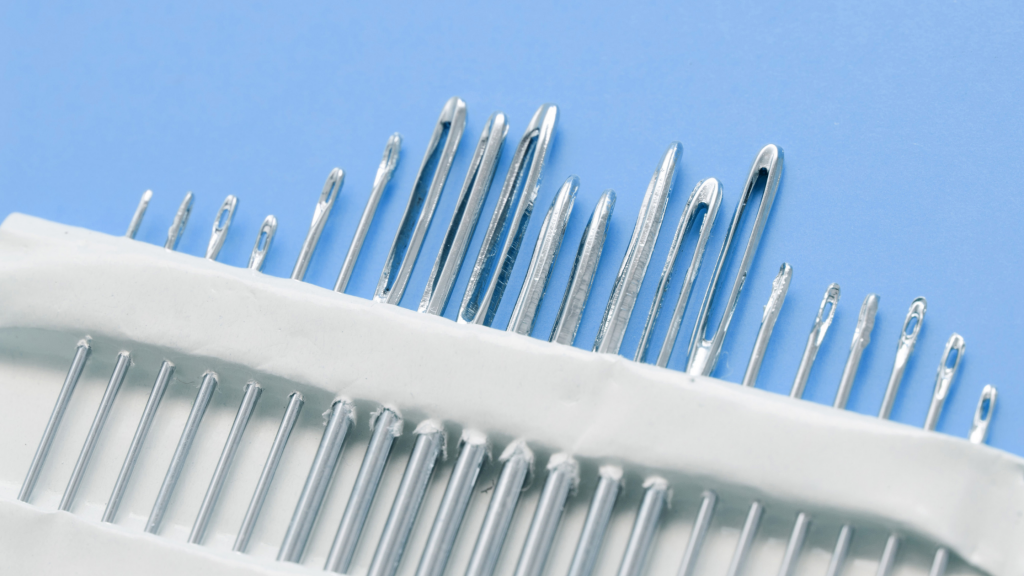
There are also different types of needles for different types of stitches. Some needles have a sharp point, while others are rounded. Some are long, and some are short. Choosing the right needle for the job is essential, or you’ll need better results.
Best Embroidery Machine — Top 16 Product Reviews by Experts
Best Embroidery Machine for Beginners — Top 8 Reviews (2022)
Best Embroidery Machine for Home Business — Top 6 Reviews
Best Brand Embroidery Machine — Top 4 Reviews of Companies
Best Embroidery Machine for Custom Designs — Top Choices
Table of Contents
Types of Needles
There are different types of needles for other purposes. Knowing the difference between them can make your life a lot easier.
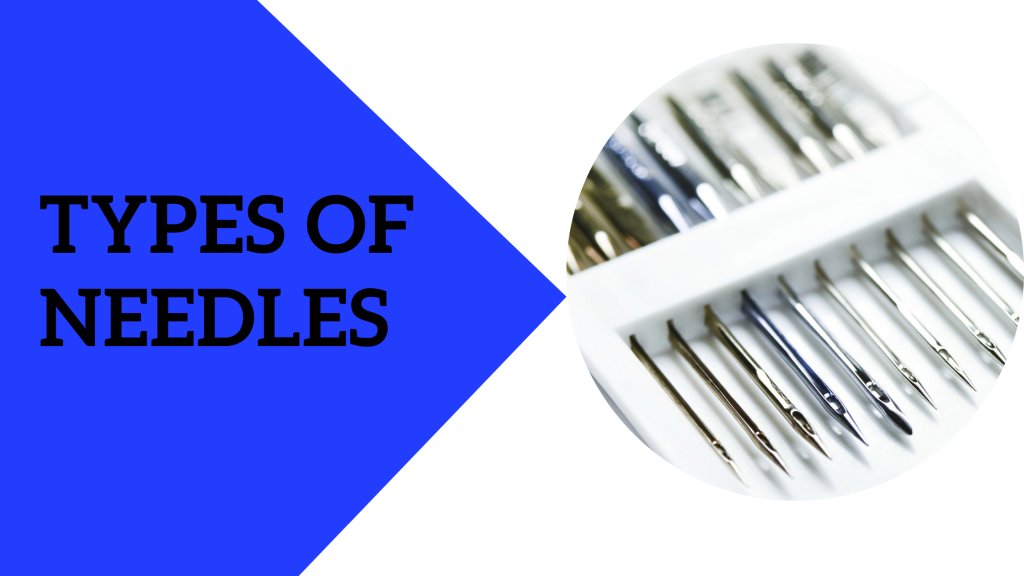
Needles have an eye and a pointed tip at the end that goes through the fabric. The needle’s size or thickness, the eye’s size and shape, the sharpness or bluntness of the tip, and the overall length of the needle all vary among different types of needles.
Embroidery Needles
Embroidery needles have a long, oval eye designed to make it easier to use multiple strands of embroidery floss. The sharp point at the end makes it easy to pierce the fabric with a tighter weave, making it perfect for surface embroidery.
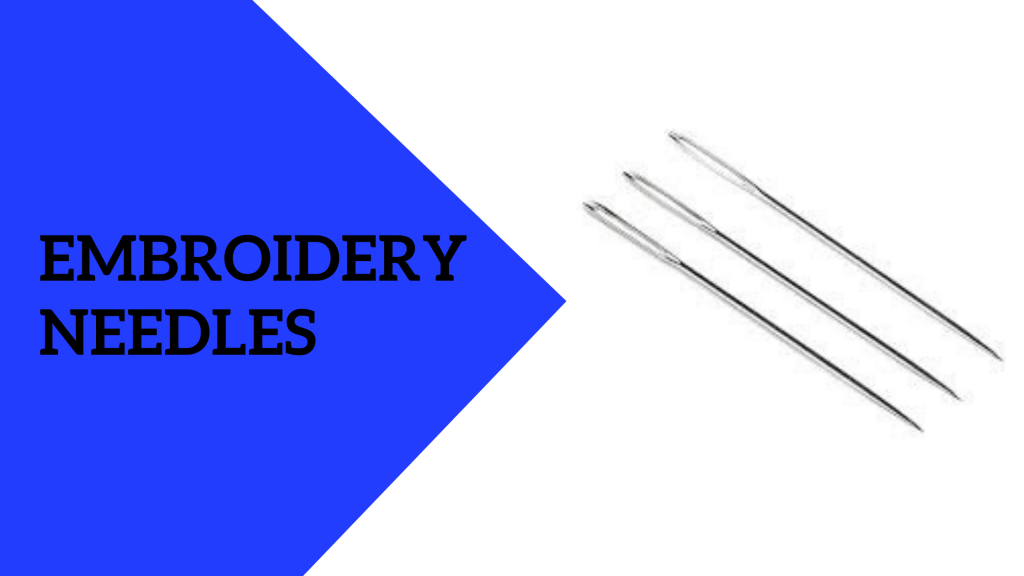
DMC and gold-eye clover needles are my favourites for embroidery. The gold plating on the clover needles helps to make threading the needle much simpler. In my experience, this has been true.
Tapestry Needle
Several types of needles can be used for embroidery. Tapestry needles are perfect for cross-stitch or needlepoint work, where the holes in your fabric must be large enough that you don’t have to pierce it with a typical sewing thread.
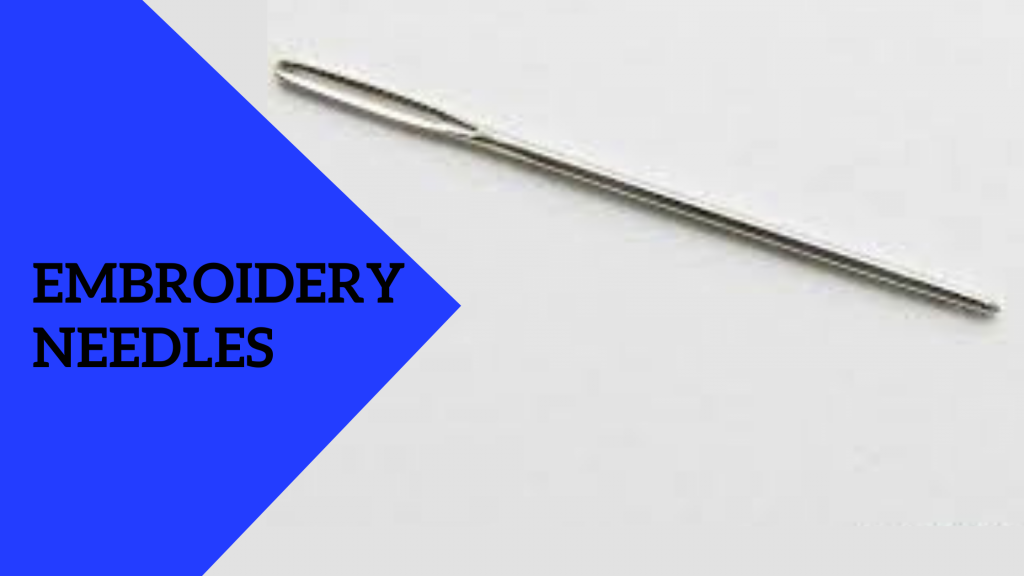
They can also be used with Hardanger embroidery, pulled threads, and drawing projects. Their blunt tips are also beneficial for certain stitches because they won’t snag the yarn or fabric.
Chenille Needle
You will need a variety of different-sized needles. The larger the eye on an item and the easier it is to thread your needle, the better. Sharp tips make it easy to pierce the fabric, while thicker needles are better suited for embroidering with heavier threads.
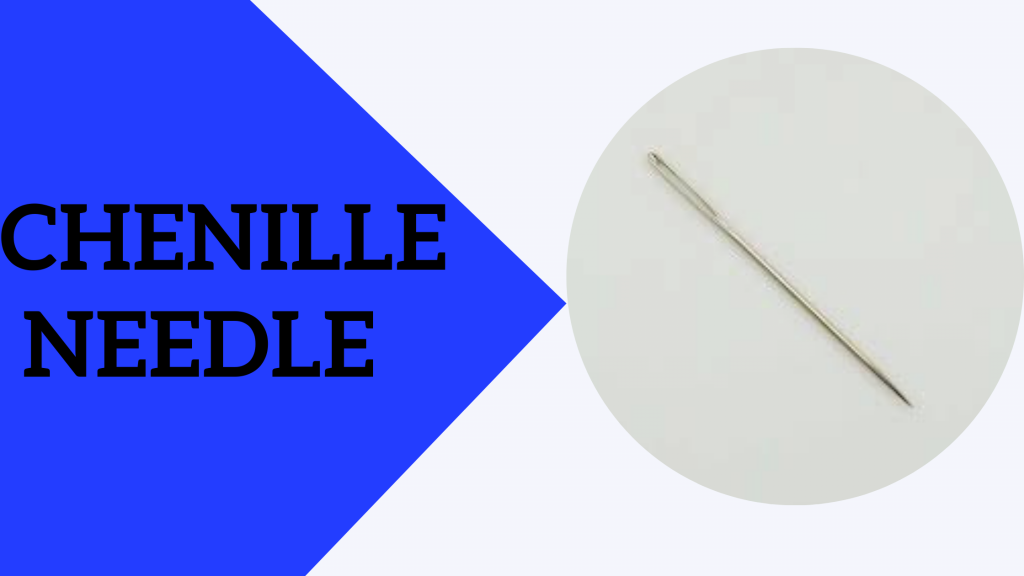
Heavier needles can also make bigger holes in your fabric, so consider that when choosing a size. I usually use embroidery needles when stitching with cotton floss, but if I need to use a thicker thread, I’ll go with a size 22-18 needle with all six strands of floss. It works just fine.
Sharps and Between Needles
Sharps are needles that are of medium length and have small, round eyes. They’re generally used as hand-sewing needles. A between needle is shorter and has a slight look and a sharp end.
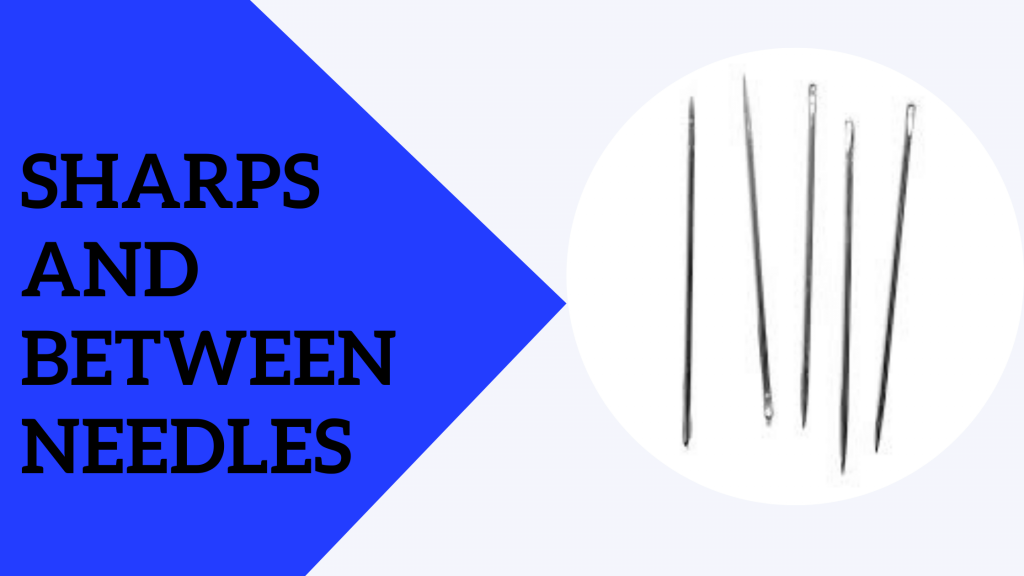
These are commonly used for quilting. Sharps can also be used for embroidery, as they have a fine point that allows for more precise stitching. Between needles are sharper than sharps, but they are still effective for cutting through fabric. They’re ideal for quilting because their shorter length makes them easier to control.
Beading Needle
Beading needles are long and thin with a small eye. They are ideally used for sewing beads and sequins onto fabric. The eye is small enough to fit over the bead, and the longer length makes it easier to thread multiple beads at once.
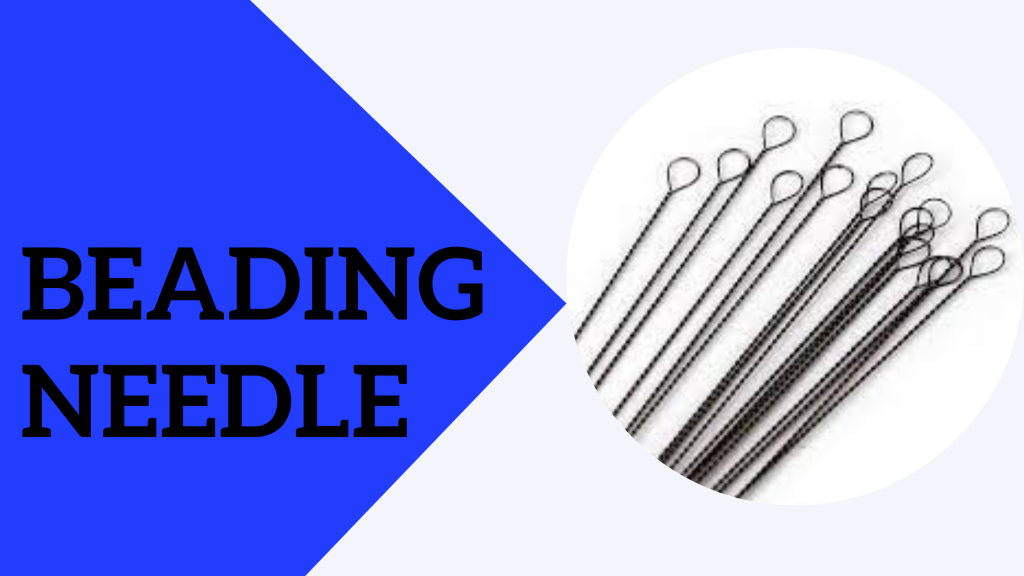
Beading needles are available in different sizes, so it is essential to choose the right needle for the task. A more significant hand might be needed for bigger beads, while a smaller needle can be used for finer details: Needlepoint, beading, and embroidery.
Here are Four Tips to Help You Decide What Size Needle to Use
- The thickness of the needle should be able to pass easily through the fabric, without damaging the thread. The rule of thumb is that the shaft of the needle should be about as thick as the embroidery thread, but this doesn’t always work for surface embroidery. You have to consider the thickness of the thread at the eye where the thread is doubled, and the weave of the fabric. A tighter, close weave is going to require a needle that can make the right-sized hole for the thread.
- Although you may hear a pop as the needle passes through the fabric, there should be little resistance in the fabric when pulling the eye of the needle through. If there is resistance – if the fabric is pulling and denting, and you have to fight to get the needle through – that’s a sign you should be using a larger needle.
- The thread shouldn’t make a loud zipper noise when it’s pulled all the way through the fabric. If you feel resistance as you pull the thread and hear a loud zipper noise, then your needle might be too small. Try using a larger needle size to see if that fixes the problem. Alternatively, if the fabric is particularly thick or stiff, you might need to use a thicker thread. Otherwise, you might end up with skipped stitches.
- There is no absolute rule or formula for the size of needle to use when stitching with a specific thread. However, there are general suggestions that can be followed. Keep in mind that the selection of the needle is often based on personal preference. What needle are you comfortable with in this stitching situation? Over time, it becomes second nature to know what size needle will work best.
FAQs
This was a complete head to toe guide for embroider needle sizes.

